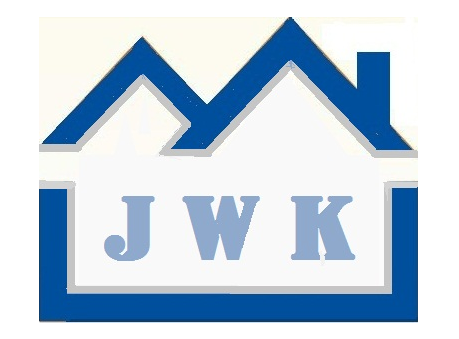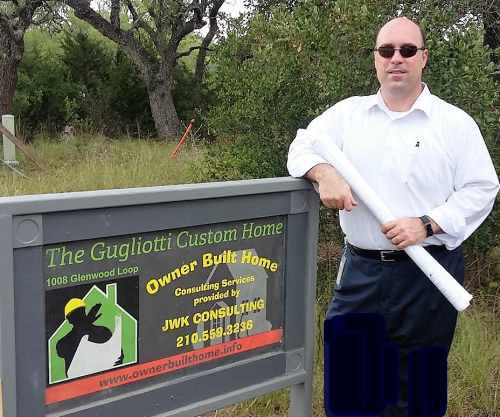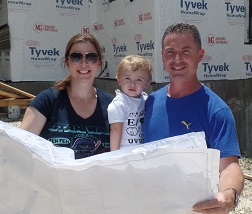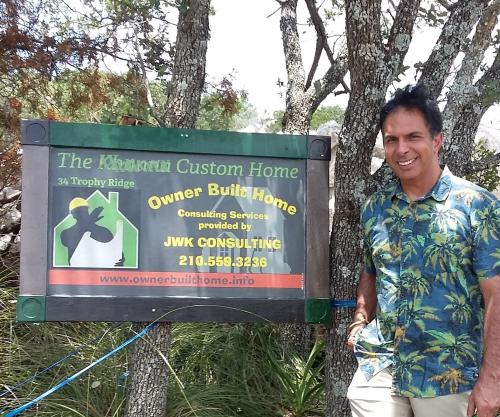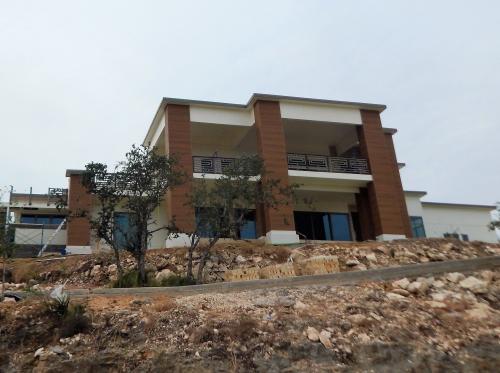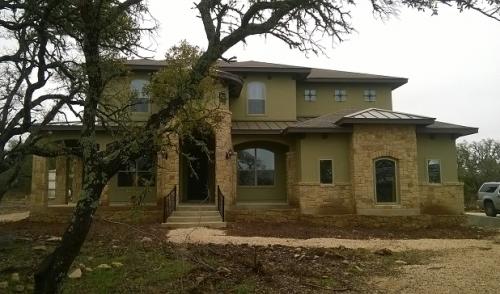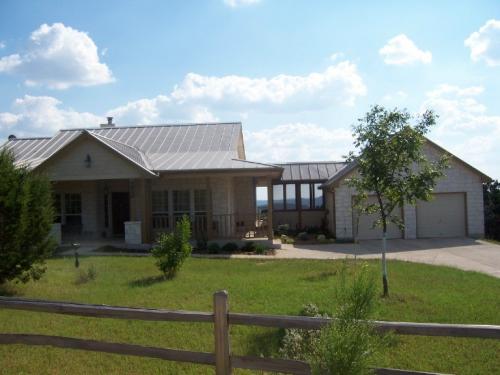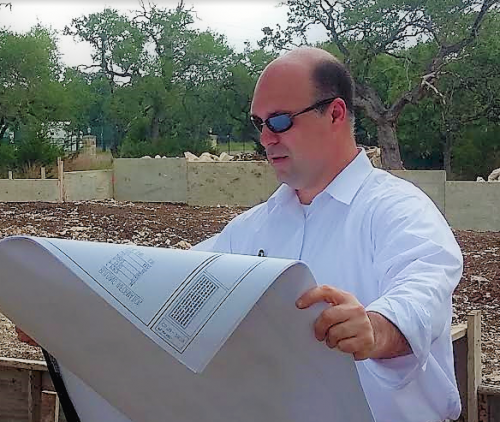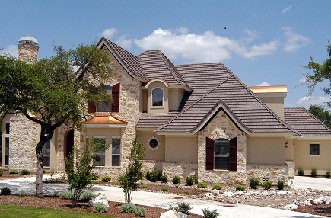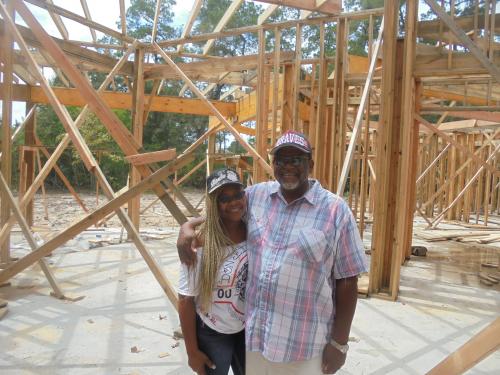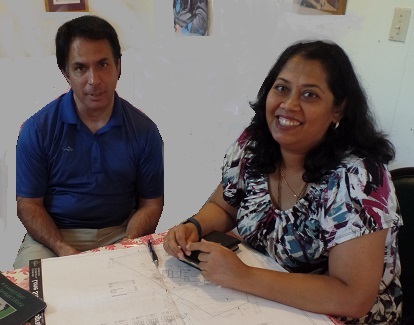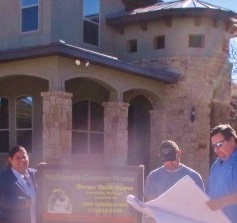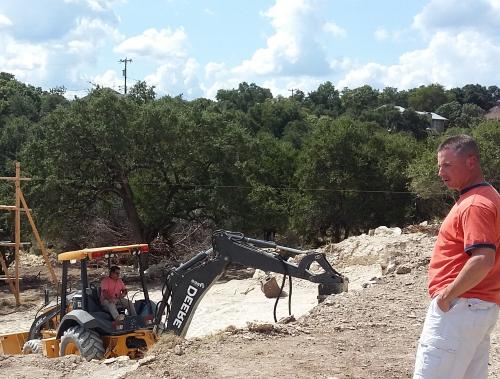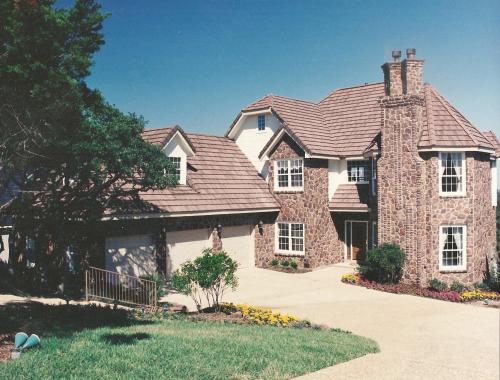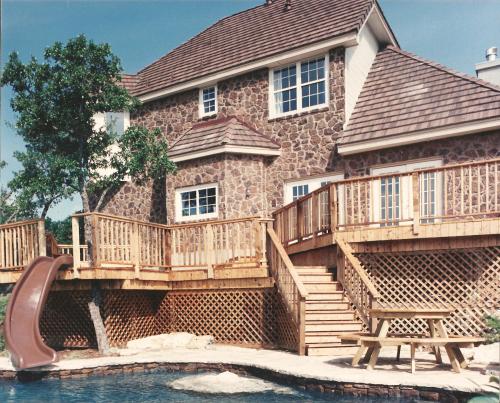
New Braunfels, Texas
JWK Consulting & Construction ManagementOwner Built Home Consulting Services & Construction Management Services provided for San Antonio and South Central Texas areas |
Blogs
Post Tensioned Slabs
Sun, 06/13/2010 - 22:31 — JoeKeresztury
In the San Antonio area since the 60's, we pretty much have had all slab foundations in new home construction with mostly re-bar steel reinforcement slabs but also with many post tension slabs. In the last twenty five years the Post Tensioned Slab has become more and more popular.
Post-tensioning is a method of reinforcing (strengthening) a concrete slab on grade with high-strength steel strands. These strands or cables are also referred to as tendons. High-tension steel tendons enable slab foundations to withstand the stresses of expansive and compressive soil conditions that are prevalent in Texas.
San Antonio and most of Texas is well known for their shifting and expansive clay soils. During the hot, dry summer of the San Antonio area, clay soils shrink, and during extended periods of wet weather soil naturally tends to expand. Since the slab foundation itself protects the soil directly beneath from wetting and drying, most swelling and shrinking takes place at the edges of the foundation.
 1a) Pre cut tendons
1a) Pre cut tendons
Plastic sheathed tendons (cables ) arrive at the site cut to length, with one anchor plate already wedged in place . This pre attached dead end anchor is nailed to the form board half the slab thickness from its top edge, and a U shaped steel backup bar is wired to the anchor to help distribute the eventual tensioning pressure over a wider area of the slab edge. The thick sleeve at the end of the tendon is designed to protect the cable and fitting from corrosive soils that may be present.
 2a) Pictured is the stressing/ tension end of a tendon
2a) Pictured is the stressing/ tension end of a tendon
The tendon is then unrolled across the foundation to the stressing or tension end anchor on the opposite slab edge. Tendons don't have to run in completely straight lines. The tendons can be diverted a foot or two to one side to avoid plumbing , forms or other items causing an obstruction, as long as the 1/2-inch tendons follow a gradual curve.


3a) Post Tension slab shown at pre pour inspection 3b) Same slab shown after concrete pour
The exact spacing of the tendons will vary depending on the thickness of the slab and other variables as determined by the foundation design engineer. A spacing of 3 to 4 feet on center in a criss cross grid pattern is typically used on most residential post tensioned slabs in the San Antonio area.
The reinforcing strands/ tendons and their specialized end fittings are cast into the center of the slab thickness before the concrete pour. After the slab is poured the forms are wrecked (removed) and the slab is allowed to cure.
 4a) Post Tension Slab shown curing after the slab pour wih cables waiting to be stretched to engineers specifications
4a) Post Tension Slab shown curing after the slab pour wih cables waiting to be stretched to engineers specifications
4-7 days after a post tension slab is poured and before it is totally cured, the contractor comes and tightens the strands/cable to within 7% of the engineers designed strength of between around 27,000 and 35,000 psi. After the concrete has cured for a few days, each cable/ tendon, is stretched with a hydraulic post tensioning and stressing jack, placing the
slab under compression.  5a) Post tensioning and stressing jacks
5a) Post tensioning and stressing jacks
Post-tensioned slabs, put the slab in tension after the concrete has cured. This can help to minimize cracking and differential settlement in adverse conditions.
Tendons are sheathed with a tough plastic sleeve that prevents them from bonding to the concrete. A coating of a grease lubricant between the plastic sleeve and the cable inside allows the cable to stretch freely during the tensioning process.
 6a) Post Tension cables shown, also known as strands or tendons. Cables are lubricated between plastic sleeve and strands
6a) Post Tension cables shown, also known as strands or tendons. Cables are lubricated between plastic sleeve and strands
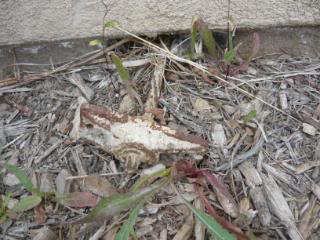 7a) Apperent tensioned cable blow out From the picture (7a) this appears to be a blowout in a post tension slab. The anchor shown should be embedded in the slab. Looks like there's concrete on the anchor here (in the pic) so the cable/ tendon was probably stretched as needed then had a blow out. Appears that cable and anchor have been exposed for a while due to the rusting. The size of the hole in the slab looks about the size of the anchor, another indication of a blowout. The effects of the blowout inside could have been just a loud bang with no damage or it could have tore up thru the concrete and flooring as it snapped. If so it was probably patched on the slab with an epoxy and the flooring would have been redone. This could have been engineer approved or maybe not. The builder should have addressed the issue and resolved the problem with the original licensed/registered engineer that was paid to design and certify the slab in the first place.
7a) Apperent tensioned cable blow out From the picture (7a) this appears to be a blowout in a post tension slab. The anchor shown should be embedded in the slab. Looks like there's concrete on the anchor here (in the pic) so the cable/ tendon was probably stretched as needed then had a blow out. Appears that cable and anchor have been exposed for a while due to the rusting. The size of the hole in the slab looks about the size of the anchor, another indication of a blowout. The effects of the blowout inside could have been just a loud bang with no damage or it could have tore up thru the concrete and flooring as it snapped. If so it was probably patched on the slab with an epoxy and the flooring would have been redone. This could have been engineer approved or maybe not. The builder should have addressed the issue and resolved the problem with the original licensed/registered engineer that was paid to design and certify the slab in the first place.
But I also don't see why if they did resolve inside issues, if there was (damage) issues then why they didn't address the outside situation, the exposed, rusting outside slab reinforcement cable, wedge and anchor along with a good sized hole in the slab, it's a smoking gun indicating that there has been a structural issue with the foundation, even though a slab can still be sound with the blowout of just one tendon it should still be repaired on the outside as far as cutting and sealing the affected area.
Also, as seen in the picture there is not the required 4" slab exposure below the stucco, which of course is even more of an issue since there is a hole in the slab. A minimum of a four inch gap is required at the base of the wall between masonry and finished grade for proper drainage and to avoid water intrusion into the exterior wall assembly.
Post tensioned slabs have as noted before gained in popularity over the years especially with the volume builders, mostly due to cost factors, but remain more of a risk then the more expensive rebar slab foundations that still seem to be preferred by local custom builders. The main risk is due to the possible problems of improper stressing of the post tension cables. These concerns can be over come by good engineering and the contractors proper execution of engineers specifications.
by Joseph W. Keresztury, CPI - JWK Inspections, San Antonio Home Inspector
Pictures by JWK Inspections, Power Team Products, Home Inspector Pro/ David Nasser
Joe Keresztury of JWK Inspections is available for Home Inspections Monday thru Saturday for San Antonio, Schertz, Garden Ridge, New Braunfels, Boerne and all South Texas surrounding areas. Commercial Inspections, Consulting and Construction Management services available.
Build your own Home services also available.

Post Tensioned Slabs
Sun, 06/13/2010 - 22:31 — JoeKeresztury
In the San Antonio area since the 60's, we pretty much have had all slab foundations in new home construction with mostly re-bar steel reinforcement slabs but also with many post tension slabs. In the last twenty five years the Post Tensioned Slab has become more and more popular.
Post-tensioning is a method of reinforcing (strengthening) a concrete slab on grade with high-strength steel strands. These strands or cables are also referred to as tendons. High-tension steel tendons enable slab foundations to withstand the stresses of expansive and compressive soil conditions that are prevalent in Texas.
San Antonio and most of Texas is well known for their shifting and expansive clay soils. During the hot, dry summer of the San Antonio area, clay soils shrink, and during extended periods of wet weather soil naturally tends to expand. Since the slab foundation itself protects the soil directly beneath from wetting and drying, most swelling and shrinking takes place at the edges of the foundation.
 1a) Pre cut tendons
1a) Pre cut tendons
Plastic sheathed tendons (cables ) arrive at the site cut to length, with one anchor plate already wedged in place . This pre attached dead end anchor is nailed to the form board half the slab thickness from its top edge, and a U shaped steel backup bar is wired to the anchor to help distribute the eventual tensioning pressure over a wider area of the slab edge. The thick sleeve at the end of the tendon is designed to protect the cable and fitting from corrosive soils that may be present.  2a) Pictured is the stressing/ tension end of a tendon
2a) Pictured is the stressing/ tension end of a tendon
The tendon is then unrolled across the foundation to the stressing or tension end anchor on the opposite slab edge. Tendons don't have to run in completely straight lines. The tendons can be diverted a foot or two to one side to avoid plumbing , forms or other items causing an obstruction, as long as the 1/2-inch tendons follow a gradual curve.


3a) Post Tension slab shown at pre pour inspection 3b) Same slab shown after concrete pour
The exact spacing of the tendons will vary depending on the thickness of the slab and other variables as determined by the foundation design engineer. A spacing of 3 to 4 feet on center in a criss cross grid pattern is typically used on most residential post tensioned slabs in the San Antonio area.
The reinforcing strands/ tendons and their specialized end fittings are cast into the center of the slab thickness before the concrete pour. After the slab is poured the forms are wrecked (removed) and the slab is allowed to cure.
 4a) Post Tension Slab shown curing after the slab pour wih cables waiting to be stretched to engineers specifications
4a) Post Tension Slab shown curing after the slab pour wih cables waiting to be stretched to engineers specifications
4-7 days after a post tension slab is poured and before it is totally cured, the contractor comes and tightens the strands/cable to within 7% of the engineers designed strength of between around 27,000 and 35,000 psi. After the concrete has cured for a few days, each cable/ tendon, is stretched with a hydraulic post tensioning and stressing jack, placing the Joe Keresztury of JWK Inspections is available for Home Inspections Monday thru Saturday for San Antonio, Schertz, Garden Ridge, New Braunfels, Boerne and all South Texas surrounding areas. Commercial Inspections, Consulting and Construction Management services available.
slab under compression.  5a) Post tensioning and stressing jacks
5a) Post tensioning and stressing jacks
Post-tensioned slabs, put the slab in tension after the concrete has cured. This can help to minimize cracking and differential settlement in adverse conditions.
Tendons are sheathed with a tough plastic sleeve that prevents them from bonding to the concrete. A coating of a grease lubricant between the plastic sleeve and the cable inside allows the cable to stretch freely during the tensioning process.  6a) Post Tension cables shown, also known as strands or tendons. Cables are lubricated between plastic sleeve and strands
6a) Post Tension cables shown, also known as strands or tendons. Cables are lubricated between plastic sleeve and strands
 7a) Apperent tensioned cable blow out From the picture (7a) this appears to be a blowout in a post tension slab. The anchor shown should be embedded in the slab. Looks like there's concrete on the anchor here (in the pic) so the cable/ tendon was probably stretched as needed then had a blow out. Appears that cable and anchor have been exposed for a while due to the rusting. The size of the hole in the slab looks about the size of the anchor, another indication of a blowout. The effects of the blowout inside could have been just a loud bang with no damage or it could have tore up thru the concrete and flooring as it snapped. If so it was probably patched on the slab with an epoxy and the flooring would have been redone. This could have been engineer approved or maybe not. The builder should have addressed the issue and resolved the problem with the original licensed/registered engineer that was paid to design and certify the slab in the first place.
7a) Apperent tensioned cable blow out From the picture (7a) this appears to be a blowout in a post tension slab. The anchor shown should be embedded in the slab. Looks like there's concrete on the anchor here (in the pic) so the cable/ tendon was probably stretched as needed then had a blow out. Appears that cable and anchor have been exposed for a while due to the rusting. The size of the hole in the slab looks about the size of the anchor, another indication of a blowout. The effects of the blowout inside could have been just a loud bang with no damage or it could have tore up thru the concrete and flooring as it snapped. If so it was probably patched on the slab with an epoxy and the flooring would have been redone. This could have been engineer approved or maybe not. The builder should have addressed the issue and resolved the problem with the original licensed/registered engineer that was paid to design and certify the slab in the first place.
But I also don't see why if they did resolve inside issues, if there was (damage) issues then why they didn't address the outside situation, the exposed, rusting outside slab reinforcement cable, wedge and anchor along with a good sized hole in the slab, it's a smoking gun indicating that there has been a structural issue with the foundation, even though a slab can still be sound with the blowout of just one tendon it should still be repaired on the outside as far as cutting and sealing the affected area.
Also, as seen in the picture there is not the required 4" slab exposure below the stucco, which of course is even more of an issue since there is a hole in the slab. A minimum of a four inch gap is required at the base of the wall between masonry and finished grade for proper drainage and to avoid water intrusion into the exterior wall assembly.
Post tensioned slabs have as noted before gained in popularity over the years especially with the volume builders, mostly due to cost factors, but remain more of a risk then the more expensive rebar slab foundations that still seem to be preferred by local custom builders. The main risk is due to the possible problems of improper stressing of the post tension cables. These concerns can be over come by good engineering and the contractors proper execution of engineers specifications.
by Joseph W. Keresztury, CPI - JWK Inspections, San Antonio Home Inspector
Pictures by JWK Inspections, Power Team Products, Home Inspector Pro/ David Nasser
Build your own Home services also available.
